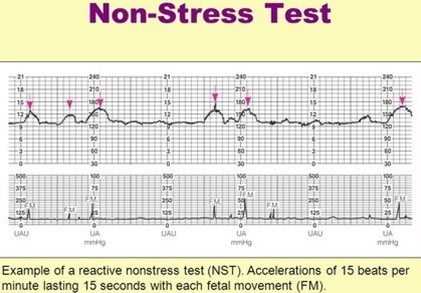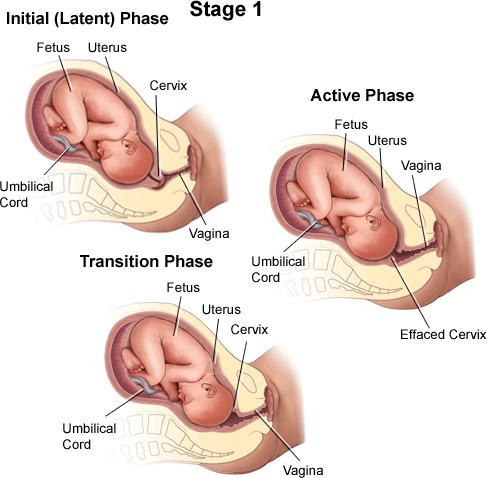The Mother-Baby nurse is caring for a two hour old newborn who is 36 4/7 weeks gestation. The nurse assesses that the newborn is experiencing tremors (jiteriness). What nursing action has the highest priority?
Select one:
Obtain a bilirubin level.
Place a pulse oximeter on the newborn.
Obtain a blood glucose level.
Take the newborn's vital signs.
The Correct Answer is C
Choice A Reason: Obtain a bilirubin level. This is an incorrect answer that indicates an irrelevant and unnecessary nursing action for a newborn with tremors or jiteriness. Obtaining a bilirubin level is a nursing action that is indicated for a newborn with jaundice (yellowish discoloration of the skin and mucous membranes), which can occur due to increased bilirubin production or decreased bilirubin excretion. Jaundice does not cause tremors or jiteriness in newborns.
Choice B Reason: Place a pulse oximeter on the newborn. This is an incorrect answer that suggests an inappropriate and insufficient nursing action for a newborn with tremors or jiteriness. Placing a pulse oximeter on the newborn is a nursing action that measures oxygen saturation and heart rate, which can indicate hypoxia (low oxygen level) or distress in newborns. Hypoxia can cause tremors or jiteriness in newborns, but it is not the only or most likely cause. Placing a pulse oximeter on the newborn does not provide enough information to diagnose or treat hypoglycemia.
Choice C Reason: Obtain a blood glucose level. This is because tremors or jiteriness are common signs of hypoglycemia (low blood glucose) in newborns, which can occur due to various factors such as prematurity, maternal diabetes, infection, or cold stress. Hypoglycemia can cause neurological damage or death if not treated promptly and effectively. Obtaining a blood glucose level is a nursing action that has the highest priority for a newborn with tremors or jiteriness, as it can confirm the diagnosis and guide the treatment.
Choice D Reason: Take the newborn's vital signs. This is an incorrect answer that implies an inadequate and delayed nursing action for a newborn with tremors or jiteriness. Taking the newborn's vital signs is a nursing action that monitors temperature, pulse, respiration, and blood pressure, which can indicate general health status and stability in newborns. Taking the newborn's vital signs may reveal signs of hypoglycemia, such as hypothermia, tachycardia, tachypnea, or hypotension, but it is not a specific or definitive test for hypoglycemia. Taking the newborn's vital signs may also waste valuable time that could be used to obtain a blood glucose level and initiate treatment.
Nursing Test Bank
Naxlex Comprehensive Predictor Exams
Related Questions
Correct Answer is B
Explanation
Choice A Reason: A fetal heart rate baseline of 140 with one acceleration to 155 for 15 seconds within 30 minutes. This is an incorrect answer that indicates a non-reactive NST, which is a test that does not meet the criteria for a reactive NST. A non-reactive NST may suggest fetal hypoxia, distress, or sleep, but it does not necessarily indicate a problem. A non-reactive NST may require further testing or stimulation to elicit a reactive result.
Choice B Reason A fetal heart rate baseline of 140 with two accelerations to 160 for 15 seconds within 20 minutes. This is because this strip meets the criteria for a reactive NST, which is a non-invasive test that evaluates fetal well- being and oxygenation by measuring the fetal heart rate response to fetal movements. A reactive NST is defined as having at least two accelerations of the fetal heart rate that are at least 15 beats per minute above the baseline and last for at least 15 seconds within a 20-minute period.
Choice C Reason: A fetal heart rate baseline of 130 with two accelerations to 135 for 15 seconds within 20 minutes. This is an incorrect answer that indicates a non-reactive NST, which is a test that does not meet the criteria for a reactive NST. The accelerations in this strip are not sufficient in amplitude, as they are only 5 beats per minute above the baseline, instead of at least 15 beats per minute.
Choice D Reason: A fetal heart rate baseline of 150 with two accelerations to 160 for 10 seconds within 20 minutes. This is an incorrect answer that indicates a non-reactive NST, which is a test that does not meet the criteria for a reactive NST. The accelerations in this strip are not sufficient in duration, as they last only for 10 seconds, instead of at least 15 seconds.

Correct Answer is A
Explanation
Choice A Reason: Latent phase of the first stage of labor. This is because this phase is characterized by mild and irregular contractions, slow cervical dilation (up to 4 cm), minimal cervical effacement (up to 40%), and minimal discomfort or pain. The latent phase is also known as the early phase or preparatory phase of labor.
Choice B Reason: Transition phase of the first stage of labor. This is an incorrect answer that describes a different phase with different characteristics. The transition phase is marked by strong and frequent contractions, rapid cervical dilation (from 8 to 10 cm), complete cervical effacement (100%), and intense discomfort or pain. The transition phase is also known as the terminal phase or acceleration phase of labor.
Choice C Reason: Perineal phase of the second stage of labor. This is an incorrect answer that refers to another stage and phase with different features. The second stage of labor begins with complete cervical dilation (10 cm) and ends with delivery of the baby. The perineal phase is the last part of the second stage, where the baby's head crowns and emerges through the vaginal opening.
Choice D Reason: Active phase of the first stage of labor. This is an incorrect answer that indicates another phase with different atributes. The active phase is characterized by moderate and regular contractions, progressive cervical dilation (from 4 to 8 cm), increased cervical effacement (from 40% to 80%), and increased discomfort or pain. The active phase is also known as the middle phase or dilatation phase of labor.

Whether you are a student looking to ace your exams or a practicing nurse seeking to enhance your expertise , our nursing education contents will empower you with the confidence and competence to make a difference in the lives of patients and become a respected leader in the healthcare field.
Visit Naxlex, invest in your future and unlock endless possibilities with our unparalleled nursing education contents today
Report Wrong Answer on the Current Question
Do you disagree with the answer? If yes, what is your expected answer? Explain.
Kindly be descriptive with the issue you are facing.
